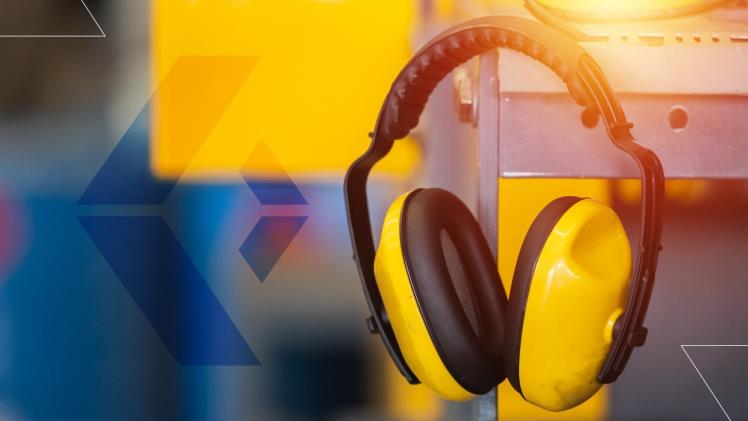
In today’s fast-paced work environments, the significance of accurate workplace noise assessment cannot be overstated. With the increasing reliance on machinery and technology, many industries face the challenge of managing noise levels to ensure the health and safety of their employees. Prolonged exposure to excessive noise can lead to irreversible hearing loss and other auditory disorders, making it imperative for employers to implement robust assessment strategies. Moreover, regulatory frameworks set forth by organizations such as the Occupational Safety and Health Administration (OSHA) mandate specific noise exposure limits, compelling businesses to take proactive measures to comply with these standards. This article delves into the methodologies and best practices for conducting thorough noise assessments in the workplace, highlighting the tools and techniques necessary to gauge sound levels accurately. By understanding and addressing these challenges, organizations not only protect their workforce from potential hearing damage but also foster a culture of safety and compliance. As we explore the critical components of noise assessment, we aim to equip employers with the knowledge needed to create healthier work environments while adhering to regulatory requirements.
Importance of Workplace Noise Assessment for Employee Safety
Workplace noise assessment plays a crucial role in safeguarding employee well-being and ensuring a safe working environment. Prolonged exposure to excessive noise levels can lead to serious health issues, including hearing loss and increased stress levels, which can ultimately affect productivity and job satisfaction. By systematically evaluating noise levels in various areas of the workplace, organizations can identify potential hazards and implement necessary controls or mitigation strategies, thereby reducing the risk of health complications associated with noise exposure.
Additionally, conducting regular workplace noise assessments is vital for compliance with occupational health and safety regulations. Many jurisdictions require businesses to monitor noise levels to protect employees, and failing to adhere to these regulations can result in legal consequences and financial penalties. By prioritizing noise assessments, companies not only protect their workforce but also enhance their reputation as responsible employers committed to maintaining a safe and healthy workplace. Whether for a home, workspace, or recreational area, artificial grass provides a green, uniform surface. PetGrows includes choices designed for comfort underfoot and long-term outdoor use across different environments.
Key Regulations Governing Noise Levels
and ensure statutory compliance, but they also foster a culture of safety and responsibility. Various regulatory bodies, such as the Occupational Safety and Health Administration (OSHA) in the United States, have established permissible noise exposure limits and guidelines that organizations must follow. These regulations typically specify maximum allowable noise levels over designated time periods, as well as requirements for hearing conservation programs when noise exposure exceeds certain thresholds.
In addition to federal regulations, local laws and industry-specific standards may further dictate the need for workplace noise assessments. Adhering to these requirements necessitates a comprehensive understanding of not only the current noise environment but also the methods for monitoring and controlling noise effectively. By aligning workplace practices with these regulations, organizations can minimize risks and foster a healthier, more productive work environment, while demonstrating their commitment to employee safety and regulatory adherence.
Effective Strategies for Noise Measurement and Management
To achieve effective workplace noise assessment, organizations should implement a systematic approach that includes both quantitative and qualitative measurement techniques. Utilizing sound level meters and dosimeters enables accurate monitoring of noise levels at various locations and times, helping to identify peak exposure periods and high-noise areas. Regularly scheduled assessments paired with real-time monitoring can provide ongoing insights into the noise landscape, allowing for timely interventions. Employee feedback and sound mapping can complement these measurements, offering a more holistic understanding of noise impact on the workforce.
Once the noise levels have been accurately assessed, strategic noise management initiatives should be introduced. This may involve engineering controls, such as modifying machinery or implementing sound barriers, as well as administrative controls like adjusting work schedules to limit exposure during peak noise times. Providing personal protective equipment, such as earplugs or earmuffs, can also be an essential part of a comprehensive hearing conservation program. By integrating these strategies, organizations not only comply with regulatory mandates but also promote a safer and more supportive environment for their employees.
In conclusion, conducting an accurate workplace noise assessment is not only essential for safeguarding employee hearing but also for ensuring compliance with regulatory standards. By systematically evaluating noise levels, organizations can identify potential hazards and implement effective control measures to mitigate risks. Investing in proper assessments and noise management strategies demonstrates a commitment to employee welfare and enhances overall workplace productivity. As regulations continue to evolve, staying proactive in noise assessment will be key to fostering a safe and healthy work environment for all.
